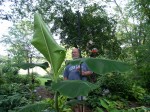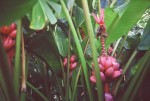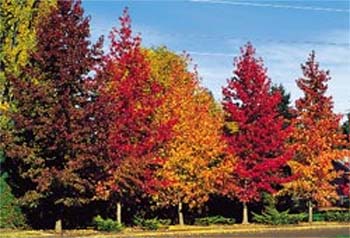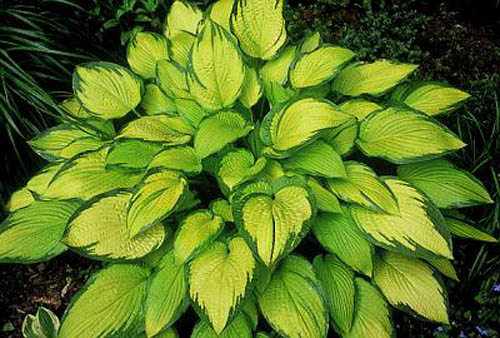Last Summer, while making a quick trip to Lowe’s to pick up some lumber, we happened to notice a display of small potted banana trees. We could not believe they were trying to sell these tropical plants in Michigan. What a joke, we thought, with our cool Spring weather much less our early Fall. There just was no way these tiny plants would ever have a chance to survive much less reach maturity.

We started to worry a few weeks later when our “little banana plant” was almost three foot tall “and growing.” By September, we new we were in trouble as it was well over six foot tall “and growing.” In late October, when we were bringing in the taro and palm we resigned ourselves to the fact that our banana experiment was headed to a tragic end as it was now over eight foot “and growing.”
In November, with the first frost forecasted we said good bye to our friend the “ the little banana tree.” Alas we just could not do it, nightfall found us trying to fit a very large banana tree in the front door. The banana tree’s new home was next to the Sago Palm and Taro in front of the French doors, “ and was still growing,”
It is now late January and our little tree is “still growing.” Spring cannot come quick enough.
Tips of the Month
We planted our banana tree on a lark! Looking back we have enjoyed every minute of it, even the mad dash to get it in before the first frost. You can practically see it grow as the leaves unfold. We are not sure what we will do with it next Fall as this unnamed specimen will be too big to bring in again, but we sure have enjoyed it.
That said, start by learning more about the available species than we did. A key factor to success when it comes to banana growing is to choose the right species. In our cold weather in Michigan you must choose a banana tree that will not get too big for your home.

We advise that you water and fertilize banana at the same time using any type of balanced fertilizer to help grow banana. Bananas are heavy feeders so we suggest that you fertilize very lightly each time that you water. After your initial watering we would not water again until your soil is dry to a one inch depth. Please do not expect this to be a plant that you “water once a week”. Bananas like high humidity, hot, dry air will destroy the leaves.
Grow banana in bright light, 10-12 hours of light are ideal for most varieties. In northern areas grow bananas in containers remembering that they like to be root bound. Transplant to a larger container when your plant is quite crowded. Never plant it in a container without a drain hole.
Flower of the Month

Web Site
Plant Delights Nursery is a mail order firm specializing in unusual perennials. Their catalog features a wide variety of native perennials, as well as their Asian counterparts. The nursery opened in 1991 after years of plant collecting and selling at small back yard sales. The on-line catalog features well over 1000 different perennials. Many of the plants listed are their own introductions. Their plants are not just botanical novelties, but good noninvasive garden plants. We have never bought a bad plant from these people.



